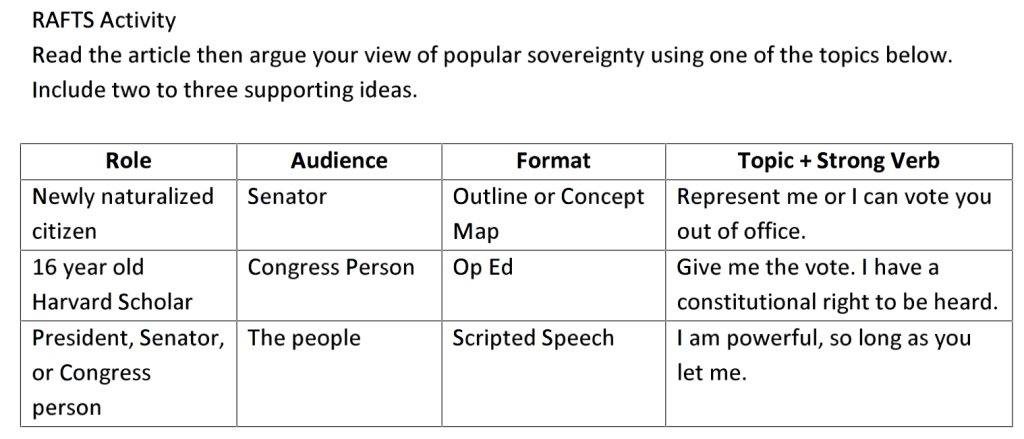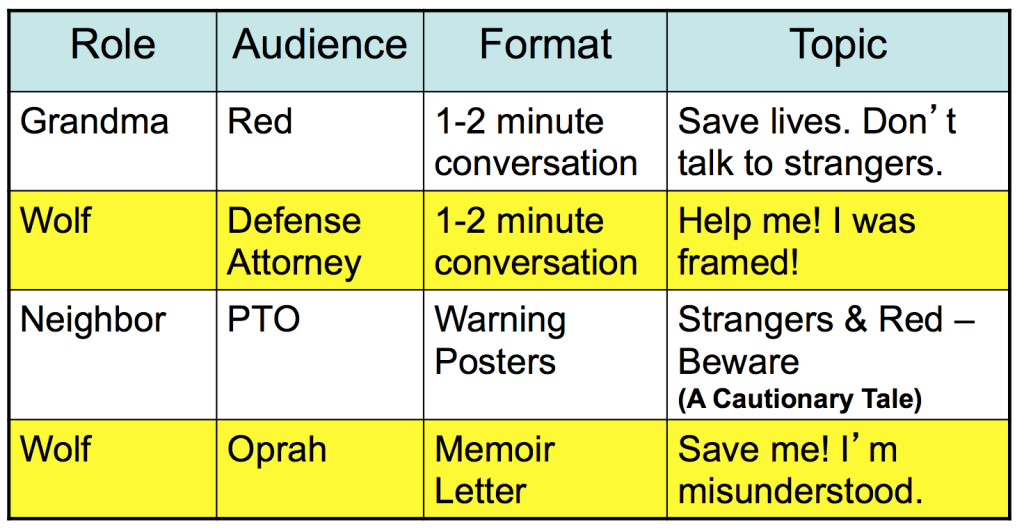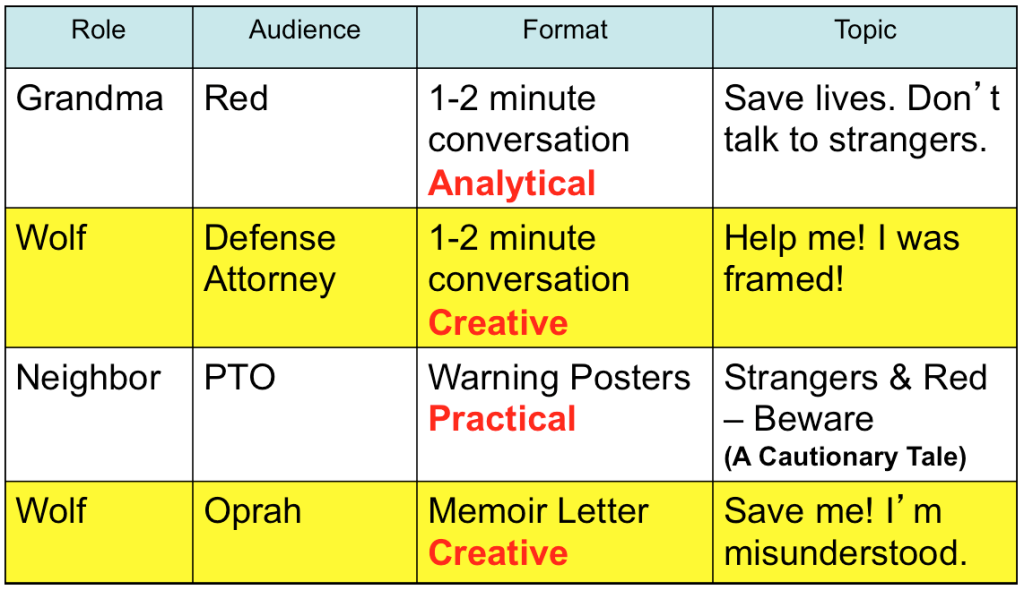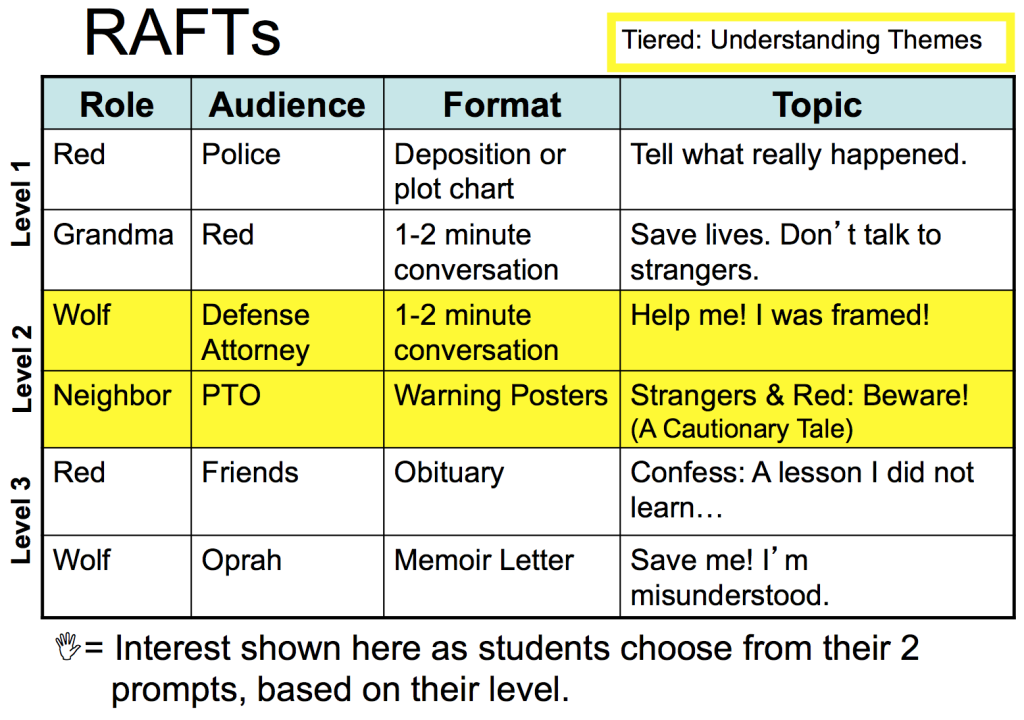In the previous two articles, we explored RAFTs (Role, Audience, Format, and Topic + Strong Verb) as an instructional strategy, and how to use RAFTs for coaching writers on writing. RAFTs can ignite engagement and context for learning. Planned with forethought, students can explore a need or problem that exists in the world beyond the classroom walls. An important consideration is: How do I differentiate RAFTs to support my diverse learners? The solution is simple, yet has layers of possibilities when implemented based on an understanding of your students.
 The key step with differentiating RAFTs is provide 3 to 4 variations of the prompt. Giving students one RAFTs to unpack can be engaging and productive. Consider than the possibilities when students have several choose from.
The key step with differentiating RAFTs is provide 3 to 4 variations of the prompt. Giving students one RAFTs to unpack can be engaging and productive. Consider than the possibilities when students have several choose from.
 The Learner’s role in Differentiation is based on Readiness, Interests, and Learning Profiles. Use the Learning Profile Cards strategy to collect data on students that will inform differentiation of RAFTs that follow.
The Learner’s role in Differentiation is based on Readiness, Interests, and Learning Profiles. Use the Learning Profile Cards strategy to collect data on students that will inform differentiation of RAFTs that follow.
Interests are activated by giving students several options to choose from. Take this even further by having a blank option—allowing for students to craft their own RAFTs based on the topic–a great way to foster Student Voice.
 Learning Profiles address how learners make sense of their learning. Learning styles, brain-based learning, and multiple intelligence profiles are generally approaches used for this. With RAFTs, structure the prompt choices based on any of these approaches, such as these examples:
Learning Profiles address how learners make sense of their learning. Learning styles, brain-based learning, and multiple intelligence profiles are generally approaches used for this. With RAFTs, structure the prompt choices based on any of these approaches, such as these examples:
 When learning profiles are intentionally integrated into the prompts, teachers can assign them to specific students based on learning data. My personal preference is to let the students choose. Students will either pick the one that makes sense to them the most (learning profile) or pick the topic that intrigues them (interests). It’s a win-win when students choose.
When learning profiles are intentionally integrated into the prompts, teachers can assign them to specific students based on learning data. My personal preference is to let the students choose. Students will either pick the one that makes sense to them the most (learning profile) or pick the topic that intrigues them (interests). It’s a win-win when students choose.
Readiness: Differentiating RAFTs based on Readiness requires the most planning, which results in worthwhile learner experiences. Sometimes students have different levels of a skill or concept. One to two prompts are crafted to match the academic level of each group of students. Having more than one prompts encourages student interests because they have choices. Prompts are assigned based on formative assessment data. The learners, individually or in groups, work at the RAFTs that will stretch them appropriately.
 RAFTs is a strategy that has multiple ways to use for meeting the needs of all students, based on where they are at, and identified needs. Check out the previous articles for a full picture of supporting students through RAFTs.
RAFTs is a strategy that has multiple ways to use for meeting the needs of all students, based on where they are at, and identified needs. Check out the previous articles for a full picture of supporting students through RAFTs.

Very motivational.